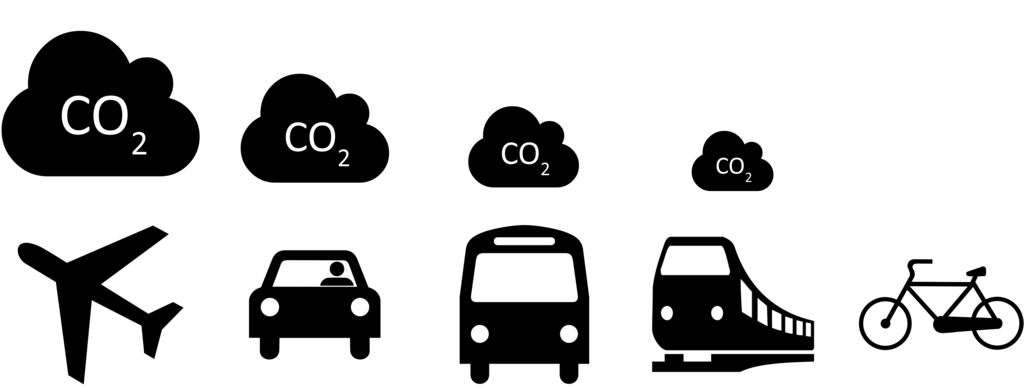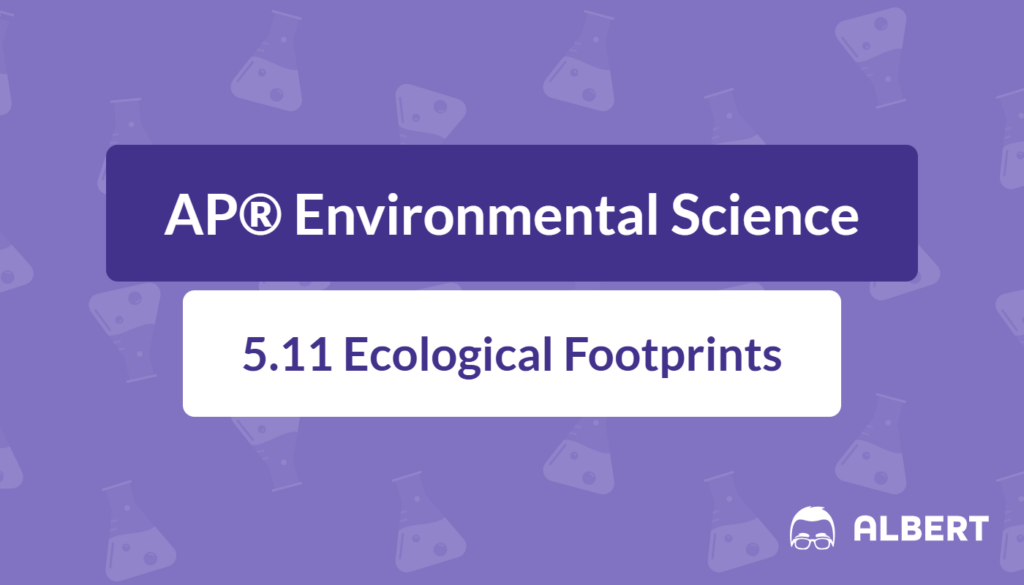What We Review
Introduction
Ecological footprints are a central concept in AP® Environmental Science. They highlight the relationship between people’s resource demand and the waste they create. However, many students struggle to grasp how these footprints connect everyday habits to the broader environment. This article simplifies the concept, explores the components of an ecological footprint, and provides a step-by-step example of how it is calculated. Additionally, it explains the definition of ecological footprint and why comparing and reducing ecological footprints is essential for sustainable living.
Modern societies rely on resources such as food, timber, and energy. Yet, not all communities extract and consume these resources in the same way. For instance, certain industrialized nations consume more resources on average because of factors like high energy use or reliance on private vehicles. In contrast, smaller or developing communities may consume fewer resources, but they may still face intense local environmental challenges.
What Is an Ecological Footprint?
An ecological footprint is the total amount of biologically productive land and water needed to support a person, a city, or even a country. In AP® Environmental Science, this metric compares resource demands and waste production across different populations. Historically, the concept emerged during the 1990s in research focused on global sustainability. The goal was to link real-world consumption (e.g., energy use, food, and materials) to the finite nature of the planet’s ecosystems.
Measuring an ecological footprint matters because it offers a tangible indicator of environmental pressure. Consequently, this information can inform policy choices and individual behavior. When footprints exceed the regeneration rate of natural resources, environmental degradation occurs. For example, overharvesting fisheries disrupts the balance of marine life, while excessive fossil fuel burning alters the carbon cycle, contributing to climate change.
Components of an Ecological Footprint
Land Use
One core element is the amount of land needed to grow food, support livestock, and provide space for infrastructure. Therefore, agricultural land and forested areas used for timber both factor into an ecological footprint. When large tracts of land must be cleared for crops or new housing, resource demand rises, and ecosystems may lose valuable habitats.
Water Use
Freshwater is vital for irrigation, drinking, and sanitation. Yet, the planet has limited supplies of readily accessible freshwater. Consequently, heavy water consumption increases an ecological footprint, especially in arid regions. Overuse of groundwater, for instance, causes aquifer depletion and disrupts local water tables.
Carbon Footprint
Carbon dioxide (CO₂) and other greenhouse gas emissions from burning fossil fuels are a prominent component of an ecological footprint. These emissions affect the carbon cycle, leading to climate change. When countries rely on non-renewable energy sources, such as coal and oil, their overall ecological footprint grows. Transitioning to renewable energy can significantly reduce carbon footprints while maintaining energy security.

Waste Production
Waste must either be recycled, decomposed, or disposed of in landfills. Therefore, the recycling rate and the generation of plastic, metal, and electronic refuse becomes a key factor. Increased waste production often leads to more pollution and the need for larger landfill areas. This component underscores the importance of proper waste management strategies, including composting and recycling.
Calculating Your Ecological Footprint
Ecological footprints can be calculated using formulas and conversion factors that estimate how much land and water area is required for various activities. The following example demonstrates a simplified process.
Step-by-Step Example
- Assess Daily Habits
- Begin by listing daily practices related to transportation, food choices, home energy usage, and waste generation. For instance, driving a car for 30 minutes, eating meat at most meals, using air conditioning frequently, and rarely recycling can all increase a footprint.
- Convert Activities into Land Area Required
- Each activity corresponds to a certain resource demand.
- Next, use standard conversion factors. For example, suppose 10 kilograms of meat production requires 50 square meters of agricultural land. Similarly, one hour of car usage might be linked to a precise CO₂ output, which translates to a specific forest area needed to offset it.
- Transportation might be associated with burning fossil fuels.
- Food consumption requires land for agriculture and livestock grazing.
- Electricity generation may involve fossil fuel power plants or renewables.
- Sum Up Footprints for Total Resource Demand
- Each activity’s land or water requirement is summed into one overall footprint using an equation like: \text{Total Ecological Footprint} = \sum (\text{Activity} \times \text{Conversion Factor})
- Therefore, if someone drives frequently, eats a meat-heavy diet, and seldom recycles, their total footprint will be higher compared to another individual who bikes to school and follows a plant-based diet.
Tools and Online Calculators
Online calculators simplify this process by asking input questions (e.g., daily commute distances, meat consumption frequency, energy bills). They then generate a footprint value, typically regarding global hectares or acres. These calculators help individuals understand where they stand compared to national and worldwide averages.
Comparing Ecological Footprints
Ecological footprints vary among different societies due to consumption patterns, population density, and resource availability. For instance, highly industrialized nations usually have larger footprints because of higher energy use, extensive transportation networks, and greater reliance on materials. Meanwhile, countries with less industrial activity can have smaller footprints, though they may still face problems such as deforestation or water pollution at local scales.
Global Averages and Country Examples
- Nations with abundant fossil fuel resources (e.g., some major oil exporters) often display large footprints.
- Countries focusing on renewable energy, such as hydropower or solar power, could record footprints closer to global averages or below, since their carbon emissions are lower.
- Population growth models also factor in: Rapidly expanding populations can stress resources and increase overall ecological footprints if resource consumption per capita remains high.
Role of Consumption Patterns
Even within a single country, living standards and cultural preferences shape footprints. In urban areas, residents might rely on public transit, thus lowering emissions. However, city dwellers might also consume more packaged goods. In contrast, rural populations may rely on personal vehicles for long distances but raise food locally. Therefore, comparing footprints within a nation can reveal distinct patterns and potential improvements.
Reducing Your Ecological Footprint
Ecological footprints are not fixed. Instead, individuals, communities, and governments can take practical steps to minimize them. Below are some strategies to consider:
- Use Renewable Energy
- Transitioning from coal or oil to renewable energy resources, such as wind or solar power, lowers carbon emissions.
- Conserve Water
- Fixing leaks, reusing greywater for gardening, and installing water-saving appliances help protect freshwater resources.
- Adopt Sustainable Transportation
- Biking, taking public transit, or carpooling reduces fuel consumption and associated CO₂ emissions.
- Limit Waste Production
- Recycling, composting, and choosing products with minimal packaging cut down on landfill demands.
- Choose Eco-Friendly Foods
- Eating less meat or selecting locally grown food reduces land and water use, as well as pollution from long transport distances.
Importance of Collective Action
Individual changes can make a difference, but broader cooperation ensures more significant progress. Governments can enforce emissions regulations or set up recycling systems. Meanwhile, corporations can adopt greener supply chains and encourage product designs that minimize waste. Therefore, collective efforts create the most substantial environmental benefits.
Conclusion
Understanding ecological footprints equips students with a valuable lens for examining resource demand and waste production. These footprints illustrate the tangible outcomes of everyday behaviors, from turning on lights to discarding plastic packaging. Moreover, they remind societies to remain mindful of the planet’s capacity to support growing populations and increasing consumption. Exploring a personal ecological footprint is a useful starting point: individuals gain insight into their role in global resource use and can identify practical measures for reducing environmental impact. Ultimately, recognizing and lowering ecological footprints will help preserve Earth’s ecosystems for future generations.
Important Vocabulary
- Ecological Footprint: The total amount of biologically productive land and water needed to support a specific population’s resource use and waste management.
- Carbon Footprint: The portion of an ecological footprint associated with carbon emissions from burning fossil fuels and other greenhouse gases.
- Renewable Energy: Energy sources, such as wind or solar, that replenish naturally and produce fewer emissions compared to fossil fuels.
- Resource Demand: The level of materials, water, and energy required by a population for its everyday needs.
- Waste Production: The generation of refuse (e.g., plastics, metals, paper) that must be managed through recycling, composting, or disposal.
Sharpen Your Skills for AP® Environmental Science
Are you preparing for the AP® Environmental Science test? We’ve got you covered! Try our review articles designed to help you confidently tackle real-world AP® Environmental Science problems. You’ll find everything you need to succeed, from quick tips to detailed strategies. Start exploring now!
Need help preparing for your AP® Environmental Science exam?
Albert has hundreds of AP® Environmental Science practice questions, free response, and full-length practice tests to try out.








